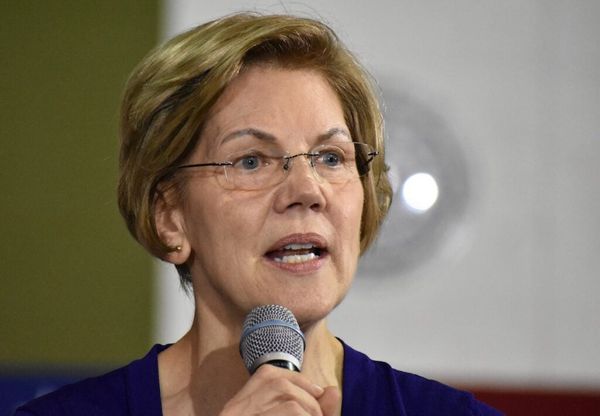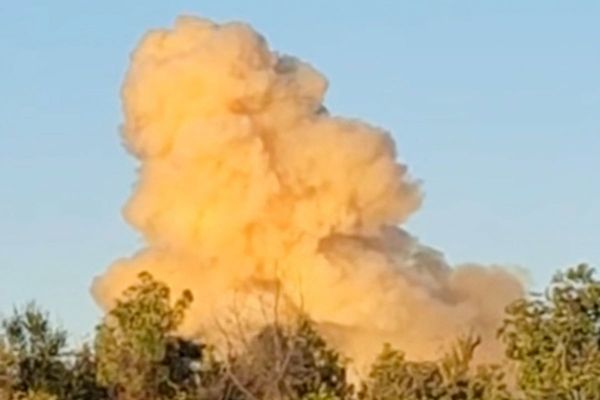
Angelica Ojinnaka-Psillakis says it was a paradox: you can grow up in a country that prides itself on being a nation of swimmers yet never learn to swim.
So at 26, she decided to take swimming lessons and discovered the reason why.
“It was quite an emotional journey to learn to swim as an adult because I realised that I didn’t have the same opportunities as others did just based on where I lived. That shouldn’t be the case,” she says.
Ojinnaka-Psillakis grew up in Blacktown, in Sydney’s west, far removed from the city’s famous beaches.
The western suburbs – in councils areas like Parramatta, Penrith, Hills shire and Blacktown – are some of Sydney’s worst-served in terms of public aquatic centres, according to an analysis of council and census data by Guardian Australia.
Worse still is the Victorian local government area of Melton, where there is one publicly accessible aquatic centre for every 178,960 people.
According Dr Amy Peden, who researches population health and drowning prevention at the University of New South Wales, public pools are where most of us learn to swim.
They are one of the safest places to swim statistically, she says, with clear water, depth markers and lifeguards. “We have millions of visits to public pools every year in Australia and very few drownings.”
Every year, there are 333m visits to publicly accessible pools, according to research commissioned by the Royal Life Saving Society. There are 2,113 pools nationally, equivalent to one facility per 12,200 people.
While nine in 10 Australians live within a 20-minute drive of such a facility, access isn’t evenly distributed by population, as the data shows.
In Sydney, councils like Parramatta had more than 134,000 residents per aquatic centre, compared to about 14,000 in Randwick and just over 7,000 per facility in Mosman.
In Melbourne, the situation in outer suburbs in councils like Melton contrasts with inner-city areas like Merri-bek and Yarra, with just over 30,000 residents per public pool facility.
“Access is definitely not equal,” Peden says.
Facilities also differ in size, cost and proximity to transport connections. Some, particularly outdoor pools in rural and regional areas, are open seasonally, limiting access.
“The multimillion-dollar aquatic centre with a roof and beautiful water temperature year-round” is not the experience in many places, she says.
Research also shows the spread is unequal across states and territories too, with people in the Northern Territory and Tasmania having lower access than those in other states like Victoria, NSW and South Australia.
Festive season the deadliest for drownings
Royal Life Saving Australia is concerned that issues like access and cost are contributing to a decline in swimming skills, with potentially deadly consequences.
There were 33 lives lost to drowning in December, according to the organisation, a rate just above the average of at least one drowning a day during summer.
The week between Christmas and New Year is the deadliest period, with an average of three people drowning a day.
The organisation’s most recent National Drowning Report finds nearly half (46%) of drowning deaths occurred on the coast, a third (34%) at inland waterways such as rivers, and 11% at swimming pools, with more than half of those deaths occurring in home pools.
The data shows that people born overseas made up a significant proportion of drowning deaths, particularly during the holiday period.
David Holland, a strategic adviser on diversity and community outreach for Life Saving Victoria, says pools are key to engaging the community about water safety.
“Regardless of where someone might live, their age, gender, background or socioeconomic status, we fundamentally believe everyone should be able to access safe and enjoyable aquatic environments,” he says.
“Public pools play an integral role in ensuring everyone across our community can enjoy the water safely, undertake vital swimming and water safety education and build their skills and confidence in the water.
Peden says aquatic facilities are a place for recreation, where young people can spend the day with friends, and somewhere to cool off and recuperate, as global heating increases the frequency of extreme heat events.
“The power of the public pool goes beyond swimming laps, or learning to swim,” Peden says.
Places to cool down in extreme heat
This summer, the City of Melbourne is offering $2 pool entry at council pools in Carlton and North Melbourne, and free swimming lessons at the City Baths, in a bid to address heat and water safety concerns.
Tiffany Crawford, Melbourne’s co-chief heat officer, says making cool places like pools more accessible is part of the city’s plan to address dangerous heat, with the council extending opening hours for pools, libraries and other cool places during extreme weather.
Extreme heat is a silent killer, she says, and can catch people off guard.
“Heat kills more people combined than any other natural hazard. Melbourne’s statistics are really high and one of the highest in the country,” she says.
It’s not just residents that the council is looking out for, but also tourists and workers like delivery riders who spend extended hours outdoors.
“We want everybody to have access to a cool place within 300 metres of their home,” she says, a strategy that includes pools and libraries.
Costs v benefits
Public aquatic centres are expensive to build, upgrade and maintain, and the cost often falls to local governments.
But the independent advisory body, Infrastructure Victoria, says the benefits to communities outweigh the costs and has recommended the state contribute funding to build new facilities in growth areas like Wyndham, Casey, Melton and Whittlesea.
Ojinnaka-Psillakis says part of the reason she didn’t learn to swim was cultural. As a daughter of Nigerian migrants, she says there was fear of the water in her community.
But beyond that, she believed access to water – and the safety skills that come with it – was something reserved for those who lived closer to it.
“You often only hear about people going swimming if they are privileged enough to be able to be near the water, or they have a pool, or have the beaches near them, or access to transport that gets them there quickly.”
As the sweltering heat of western Sydney summers became harder to ignore, Ojinnaka-Psillakis realised she could no longer avoid the water.
At 26, she decided it was time to face her fear and finally learn to swim and documented her journey for a podcast, Sink or Swim. It took about 20 lessons for her to feel comfortable in the water.
In the group lessons, surrounded by other adult learners, many of whom, like her, had come from migrant backgrounds, Ojinnaka-Psillakis began to understand that her experience wasn’t unique.
“It’s ironic because of course we live in Australia, where we’re all ascribed to this narrative that we love the water. But I didn’t even know how to swim.”
Peden encourages those lucky enough to live near a public pool or aquatic centre to make sure they pay a visit this summer.
“It’s a really great place to enjoy the water and ultimately, the safest place to swim.”
• A picture caption was amended on 4 January 2025. An earlier version stated that Bronte baths was in the Randwick council area. It is located in the Waverley council area.







